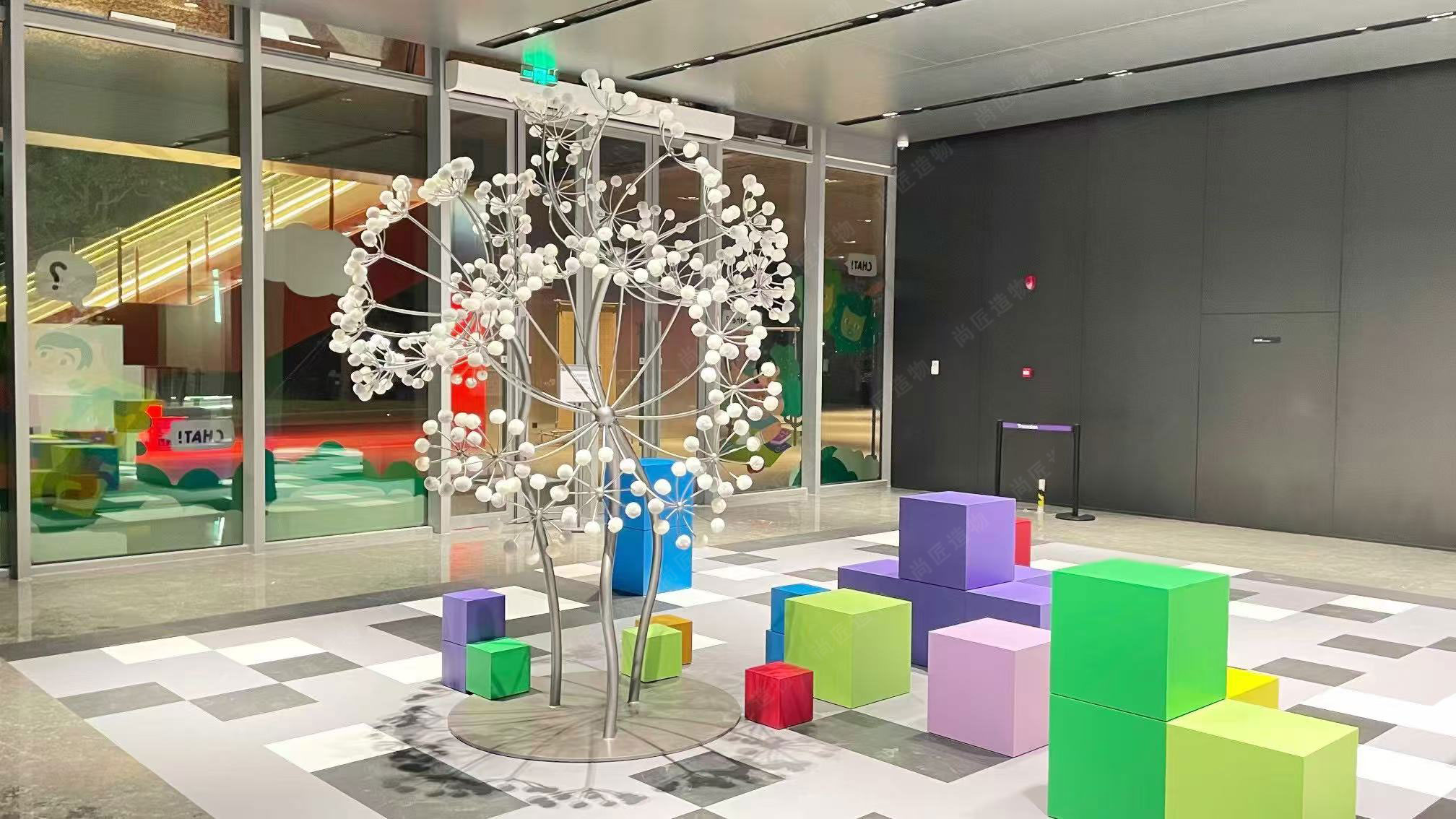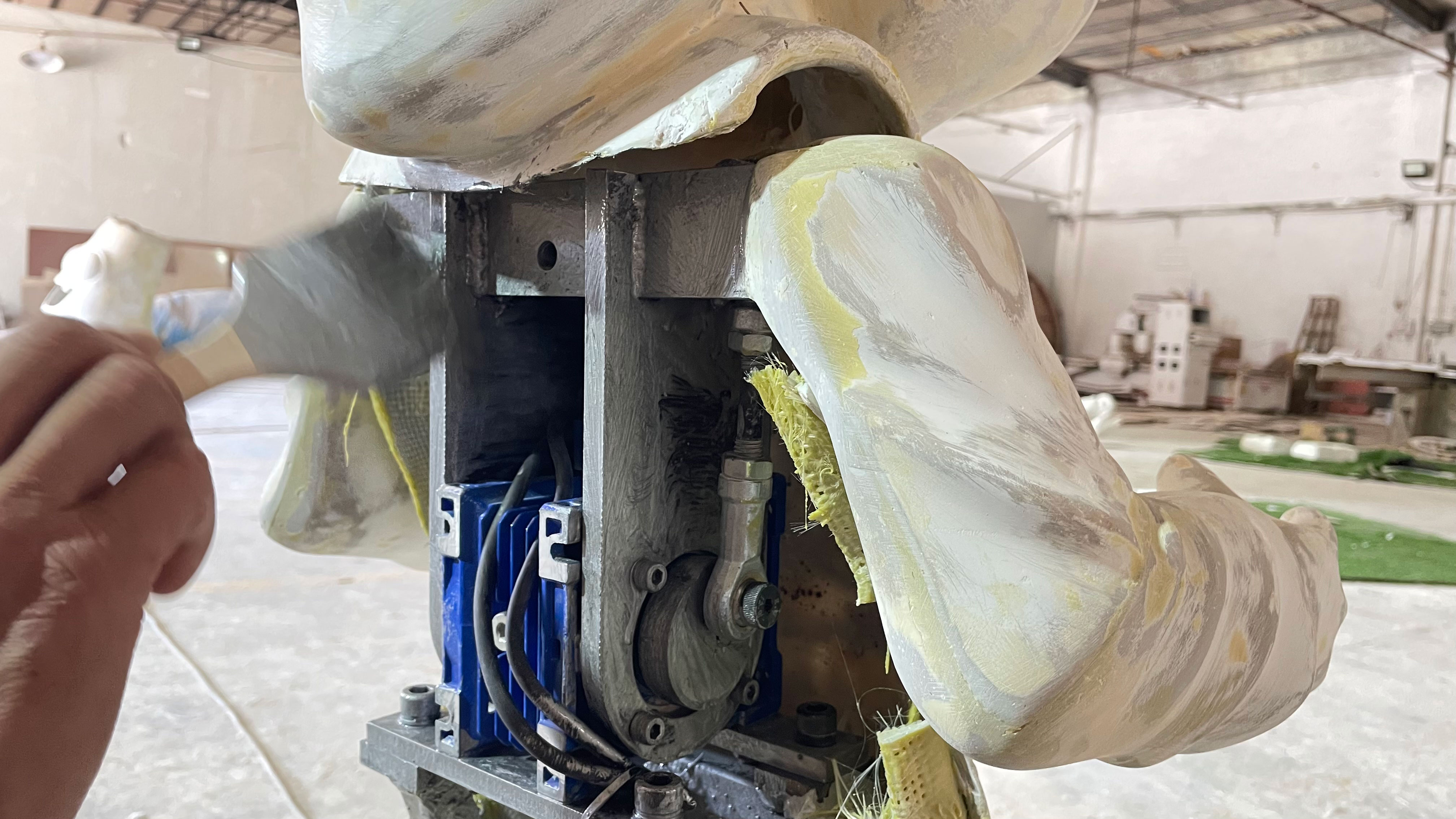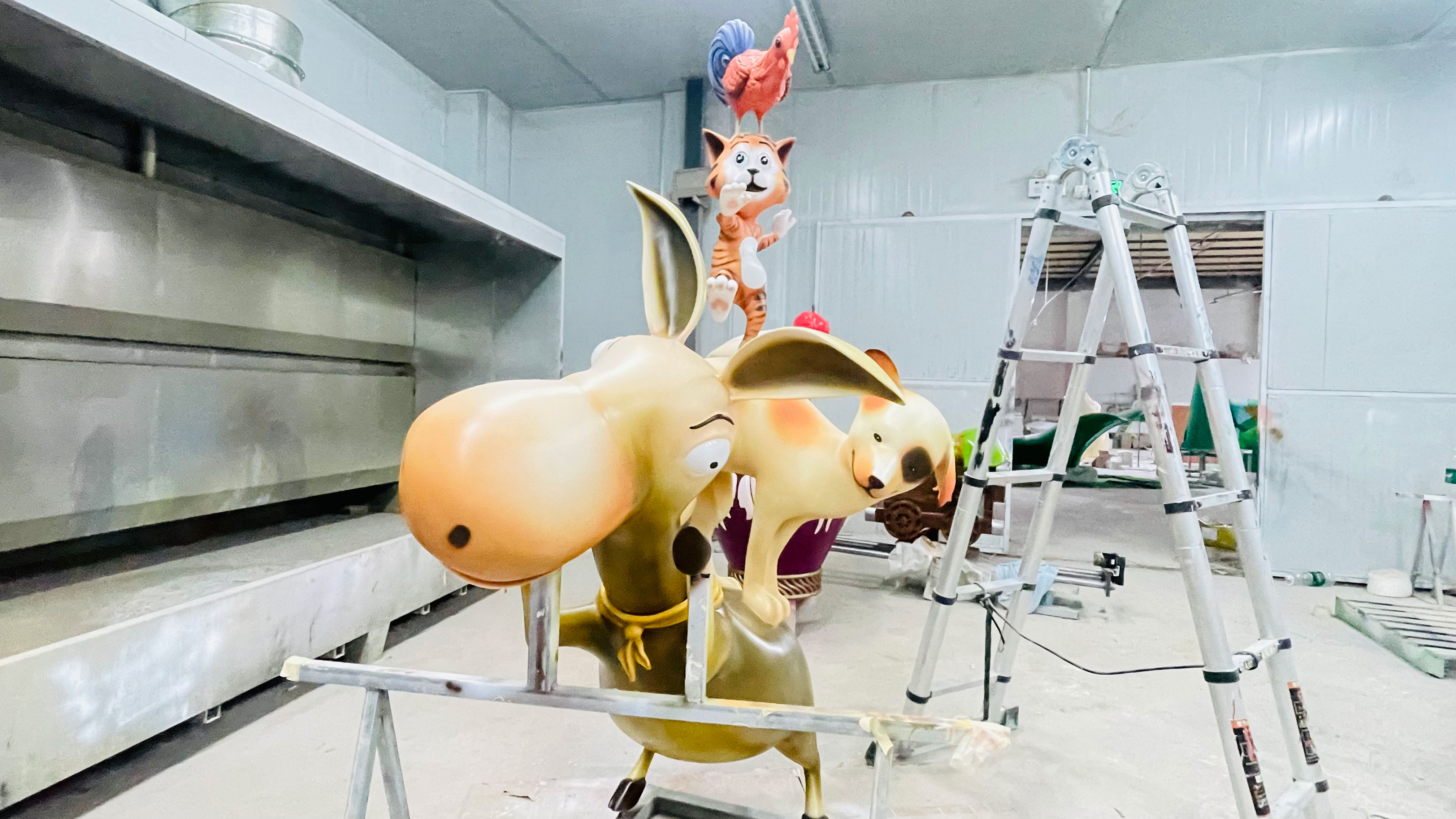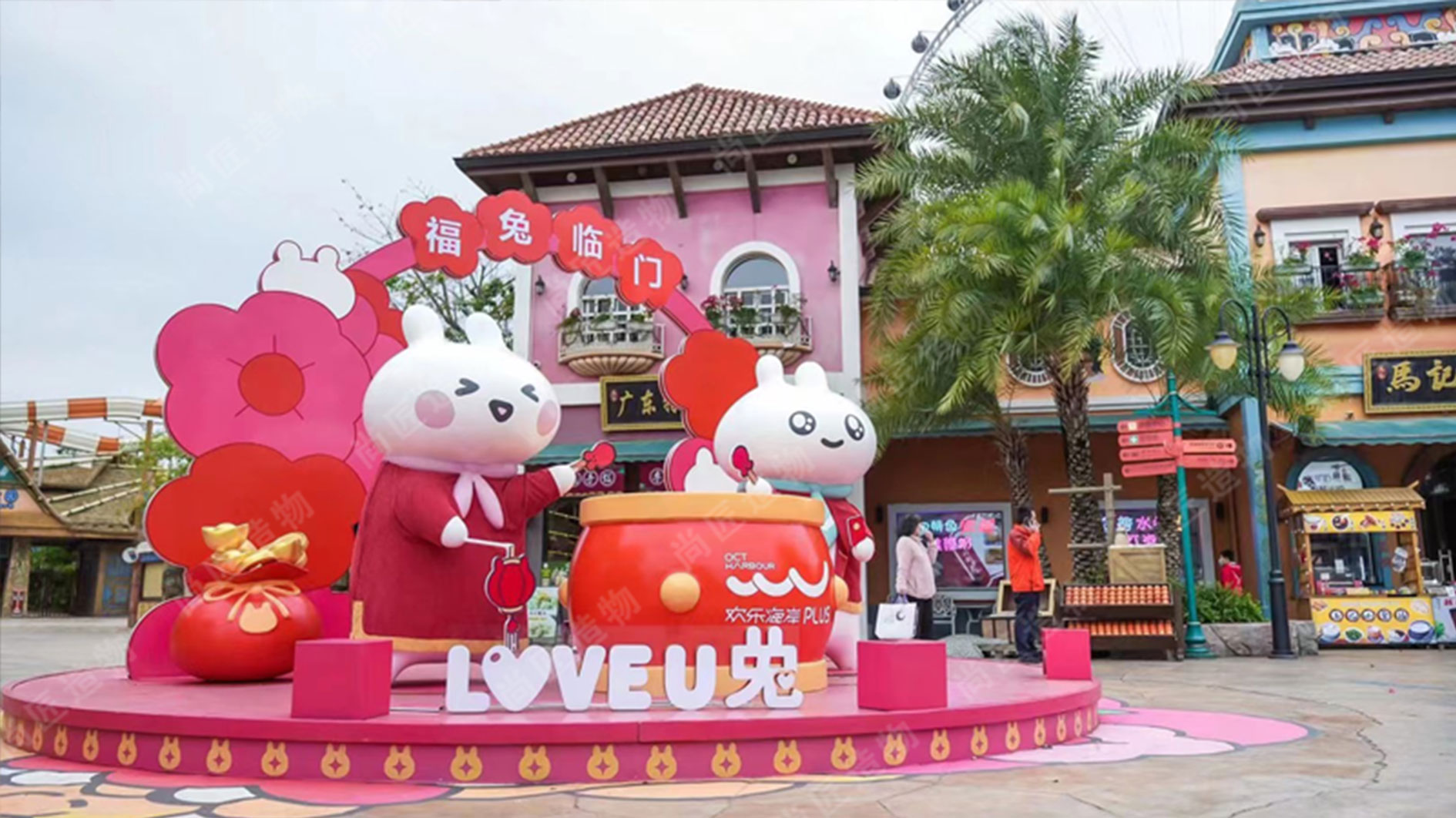Key Takeaways
Outdoor stainless steel sculptures combine durability with artistic expression, making them ideal for gardens, parks, and urban plazas. Their weather-resistant properties ensure longevity, even in harsh climates, while polished or brushed finishes add reflective elegance to landscapes. Custom designs allow seamless integration with architectural elements, such as water features or geometric structures, enhancing both private and public spaces.
"Stainless steel’s versatility in sculpture design lies in its ability to balance form and function—transforming outdoor areas into dynamic art experiences."
For those considering installations, prioritize designs that complement the surrounding environment. For example, abstract shapes work well in modern gardens, while figurative pieces like Cartoon sculpture can inject whimsy into playful settings. Maintenance is minimal, but periodic cleaning preserves luster and prevents debris buildup.
Handcrafted metal art often incorporates textured surfaces or kinetic elements, creating visual interest through light and movement. When planning public installations, collaborate with artists who specialize in large-scale metalwork to ensure structural integrity and aesthetic coherence. This approach guarantees sculptures that withstand time while elevating outdoor spaces into cultural landmarks.

Outdoor Stainless Steel Sculpture Durability
Stainless steel’s exceptional durability makes it a premier choice for outdoor sculptures exposed to harsh weather conditions. Unlike more fragile materials, such as Fiberglass sculpture, stainless steel resists corrosion, rust, and UV degradation due to its chromium content, which forms a protective oxide layer. This inherent strength ensures sculptures maintain structural integrity for decades, even in coastal or high-humidity environments.
Craftsmanship further enhances longevity. Welded seams are polished to prevent moisture retention, while thickness gauges (typically 3–6 mm) are selected based on project scale and wind load requirements. For example, larger installations in public plazas often use 316-grade steel, known for superior resistance to saltwater and industrial pollutants.
| Key Durability Factors | Impact on Longevity |
|---|---|
| Chromium Content (10–20%) | Prevents rust and oxidation |
| Regular Maintenance Cleaning | Removes debris and pollutants |
| Professional Surface Finishing | Reduces scratches and surface erosion |
Environmental adaptability also plays a role. Stainless steel withstands temperature fluctuations (-40°F to 1500°F) without warping, making it suitable for diverse climates. Proper installation—anchoring sculptures to reinforced concrete bases—prevents shifting during storms. This combination of material science and meticulous engineering ensures outdoor sculptures remain visually striking and structurally sound, seamlessly blending artistry with practicality.

Weatherproof Steel Sculpture Craftsmanship
The creation of weatherproof stainless steel sculptures hinges on specialized techniques that balance artistic vision with engineering precision. Unlike conventional materials, stainless steel sculpture relies on alloys containing chromium and nickel, which form a passive oxide layer to resist corrosion, UV damage, and temperature fluctuations. Artisans employ TIG welding and cold-forming methods to shape sheets and rods without compromising structural integrity, ensuring seamless joints that withstand decades of exposure.
Surface treatments play a critical role: brushed finishes reduce glare while retaining scratch resistance, and mirror-polished surfaces repel moisture accumulation. For outdoor installations, passivation—a chemical process that enhances the alloy’s natural protective layer—is often applied post-fabrication. This meticulous approach extends beyond functionality; textured patinas or directional grinding patterns add visual depth, allowing sculptures to interact dynamically with sunlight and shadows.
Craftsmanship also addresses site-specific challenges, such as coastal salt spray or urban pollution, through tailored material grades like 316L stainless steel. By integrating these techniques, artists and fabricators ensure that each piece remains both aesthetically striking and structurally resilient, merging artistry with the demands of permanent outdoor placement.
Custom Garden Metal Art Installations
Beyond standard landscape features, custom metal art installations offer tailored solutions to transform gardens into dynamic visual experiences. Stainless steel’s versatility allows artisans to craft sculptures that align with specific themes, from geometric abstractions to Realistic sculpture mimicking organic forms. Unlike mass-produced decor, these bespoke pieces integrate seamlessly with existing architectural elements, whether complementing a modern patio’s angular lines or softening a cottage garden’s floral chaos.
Designers often collaborate with clients to balance aesthetic vision with functional considerations. For instance, a kinetic sculpture might serve as a focal point near water features, while low-profile abstract works can guide foot traffic without overwhelming smaller spaces. The material’s inherent corrosion resistance ensures longevity, even in humid or coastal environments, reducing maintenance needs over decades.
This approach extends beyond private gardens to public plazas and corporate campuses, where large-scale installations reinforce brand identity or cultural narratives. By merging artistry with engineering, custom metalwork bridges the gap between temporary decor and permanent landscape architecture, creating spaces that evolve in dialogue with their surroundings.
Polished Stainless Landscaping Accents
Polished stainless steel surfaces bring a refined, modern aesthetic to outdoor spaces while maintaining functional durability. These accents act as focal points in gardens, pathways, and courtyards, reflecting natural light to create dynamic visual interplay with plants, water features, and architectural elements. The mirror-like finish evolves with the environment—capturing sunrises, amplifying seasonal foliage hues, or blending with minimalist hardscapes. Beyond aesthetics, the non-porous surface resists corrosion from rain, humidity, and temperature shifts, requiring minimal upkeep compared to traditional materials like bronze or stone.
Designers often pair polished finishes with organic shapes or angular geometries to contrast or complement surrounding textures. For example, IP character sculpture installations can merge storytelling with reflective surfaces, transforming public parks into interactive art spaces. Customizable sheen levels—from brushed satin to high-gloss—allow tailored integration into both rustic and contemporary settings. Strategic placement ensures sculptures avoid overwhelming smaller gardens while enhancing scale in expansive plazas. This balance of artistry and engineering makes polished stainless steel a versatile choice for elevating landscapes into cohesive, enduring art experiences.

Architectural Sculpture Integration Solutions
Integrating stainless steel sculptures into architectural spaces requires balancing aesthetic vision with structural practicality. Designers often collaborate with architects to align sculptural elements with a site’s existing geometry, ensuring installations complement building facades, courtyards, or urban plazas. For instance, kinetic sculpture concepts can introduce dynamic movement to static environments, creating visual contrast against rigid architectural lines. Site-specific fabrication techniques, such as laser-cut patterns or modular assemblies, allow sculptures to harmonize with materials like glass, concrete, or natural stone.
Weather-resistant stainless steel proves ideal for permanent installations, as its low-maintenance properties reduce long-term upkeep in high-traffic areas. Strategic placement—such as anchoring sculptures near entryways or embedding them into water features—enhances spatial storytelling while maintaining functional flow. Advanced mounting systems, including concealed brackets or reinforced foundations, ensure stability without compromising artistic intent. By merging technical precision with creative expression, these solutions transform ordinary spaces into immersive, culturally resonant landmarks.

Handcrafted Metal Art for Public Spaces
Public spaces benefit immensely from handcrafted stainless steel sculptures, which combine aesthetic appeal with structural resilience. Unlike mass-produced pieces, custom metal art for parks, plazas, and civic centers reflects local culture or thematic narratives through deliberate design choices. Skilled artisans employ techniques like precision welding, textured finishes, and geometric abstraction to create works that withstand decades of exposure to wind, rain, and temperature fluctuations.
These sculptures often serve as focal points, encouraging community interaction while harmonizing with surrounding architecture. For example, abstract forms might mirror nearby building lines, while organic shapes soften urban environments. Collaborations between metalworkers and landscape architects ensure seamless integration, balancing artistic expression with practical considerations like foot traffic flow or sightline preservation.
The durability of stainless steel makes it ideal for high-traffic areas, requiring minimal upkeep compared to traditional materials. From corporate campuses to municipal gardens, handcrafted installations transform functional spaces into dynamic cultural landmarks, proving that public art can be both enduring and emotionally resonant.
Stainless Steel Garden Sculpture Designs
Stainless steel garden sculptures offer a harmonious balance between artistic expression and functional design, adapting seamlessly to both formal and natural landscapes. These pieces often feature geometric patterns, flowing organic shapes, or abstract forms that interact with light and surroundings. Unlike traditional materials, stainless steel resists rust and corrosion, ensuring long-term structural integrity even in humid or coastal environments. Designers frequently incorporate mirrored or brushed finishes to amplify sunlight reflections or create subtle contrasts with foliage.
For private gardens, sculptures may scale down to intimate sizes, serving as focal points among flower beds or water features. Customizable options allow integration with climbing plants or embedded lighting systems, blending art with ecosystem support. In larger estates, tiered installations or kinetic designs introduce movement, responding to wind shifts for dynamic visual effects. Common themes include wildlife motifs, minimalist spheres, and interconnected metal ribbons that guide the eye through garden pathways.
By selecting corrosion-resistant alloys and precision-welded frameworks, these sculptures maintain their aesthetic appeal with minimal upkeep. Their adaptability makes them suitable for modern minimalist gardens, rustic woodland settings, or transitional spaces where architecture meets nature.

Timeless Outdoor Artistry in Metalwork
Stainless steel’s inherent strength and adaptability have redefined how artists approach permanent outdoor installations. Unlike conventional metals that succumb to weathering, stainless steel sculptures retain their structural and aesthetic integrity for decades, even in coastal or high-humidity environments. This resilience allows artists to focus on intricate detailing—fluid curves, geometric abstractions, or textured surfaces—without compromising longevity. The interplay of light on polished or brushed finishes creates dynamic visual effects, shifting with the sun’s angle or ambient lighting.
Modern metalworkers often collaborate with landscape architects to ensure sculptures harmonize with their surroundings, whether as focal points in botanical gardens or subtle accents in urban plazas. Techniques like TIG welding and laser cutting enable precise execution of complex designs, while modular fabrication allows large-scale installations to withstand environmental stresses. By balancing technical precision with artistic expression, these works transcend mere decoration, becoming enduring symbols of cultural identity or natural beauty. Their low-maintenance nature further cements stainless steel as a practical yet visionary medium for public and private spaces alike.
Conclusion
Outdoor stainless steel sculptures represent a harmonious balance between artistic expression and functional design. Their durability ensures they withstand harsh weather, while their polished finishes and customizable forms allow seamless integration into gardens, parks, or urban plazas. As we’ve explored, these pieces are not merely decorative but serve as enduring symbols of creativity and innovation in public and private spaces.
By combining advanced craftsmanship with corrosion-resistant materials, artists and designers create works that retain their aesthetic appeal for decades. Whether enhancing architectural landscapes or serving as standalone focal points, stainless steel sculptures offer versatility that few other mediums can match. Their timeless quality ensures they remain relevant amid changing design trends, making them a sustainable investment for both aesthetic and practical purposes.
Ultimately, the marriage of artistry and engineering in outdoor stainless steel sculptures elevates landscapes into dynamic, evolving environments. As communities and individuals seek to blend beauty with longevity, these installations will continue to shape our shared spaces with elegance and resilience.
Frequently Asked Questions
What makes stainless steel ideal for outdoor sculptures?
Stainless steel’s corrosion resistance and structural integrity allow it to endure rain, humidity, and temperature fluctuations. Its non-porous surface prevents rust, while polished or brushed finishes maintain visual appeal over decades.
How are weatherproof designs achieved in metal sculptures?
Artists use marine-grade stainless steel (e.g., 316L alloy) and seal welded joints to block moisture ingress. Protective coatings, like clear powder finishes, add an extra layer against UV damage and environmental pollutants.
Can custom designs match existing garden or architectural themes?
Yes. Fabricators collaborate with clients to align sculptures with landscape layouts, color schemes, and spatial dynamics. Modular designs or site-specific scaling ensure seamless integration into gardens, plazas, or building facades.
What maintenance do stainless steel sculptures require?
Routine cleaning with mild soap and water removes dirt buildup. Annual inspections for scratches or debris in textured surfaces help preserve finishes. No specialized treatments are needed under normal conditions.
Are these sculptures suitable for public spaces?
Absolutely. Stainless steel meets safety standards for public installations due to its durability and resistance to vandalism. Smooth edges, reinforced bases, and anti-graffiti coatings are often incorporated for high-traffic areas.
How do polished finishes impact longevity?
Polishing not only enhances reflectivity but also creates a denser surface layer, reducing vulnerability to pitting or staining. Over time, natural patina development can add character without compromising structural stability.
 ch
ch English
English






